When Canon released their first DSLR, the D30 in October 2000, things began moving incredibly quickly in the digital imaging space. Canon were playing catch up, most notably to their chief rivals Nikon. The three megapixel D30, whilst a superb digital camera in its own right, was not a professional imaging tool. The D30 auto focus was slow and ponderous, the body wasn’t weather sealed and more importantly the burst rate was only three frames per second.
Professionals of the time were used to the engineering masterpiece that was the film based EOS 1V, a camera so outrageous that it could eat an entire roll of 36 exposure film in just under 3 seconds if you needed it to. Sports reporters, journalists and newspapers were not in any hurry to move away from their tried, trusted and tank like EOS 1 series cameras without something seriously tempting and compelling.
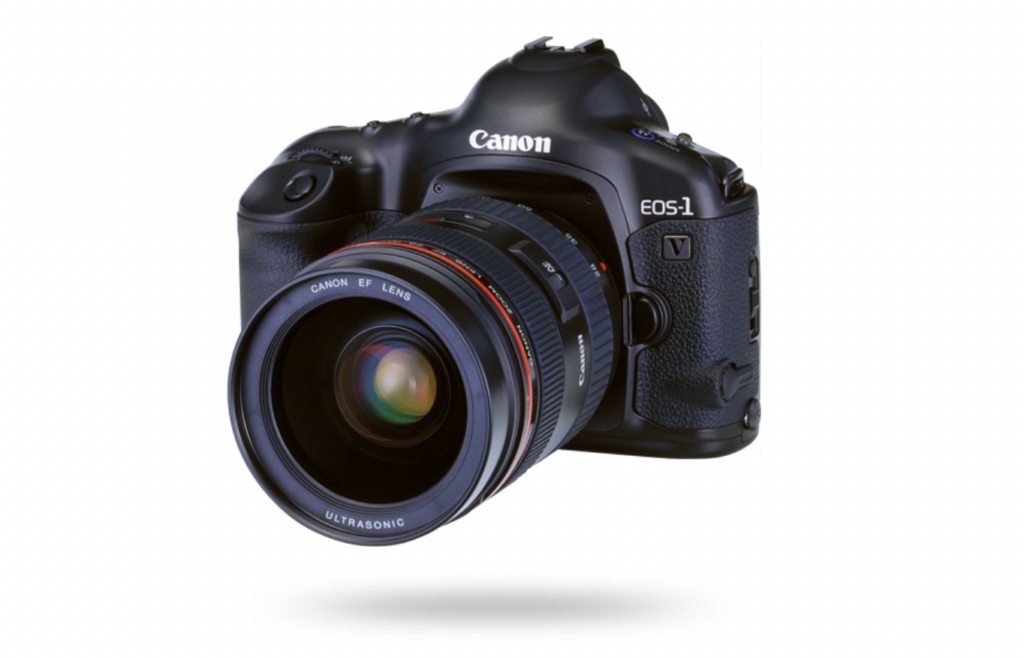
So what do you do in Canon’s shoes when you’ve made a film camera so good that no one is willing to transition to digital? Simple, take the 1V and shove a CMOS sensor inside it and a screen on the outside. Essentially, this is exactly what Canon released in October of 2001 in the form of the EOS 1D. Offering 4 megapixel resolution, 45 AF points and over 8 frames per second, the rugged 1D was aimed squarely at the professional market with the sole aim of prying film cameras out of their hands.
Priced at a wallet busting £5499 on launch, the 1D was an almost instant success and paved the way for Canon to build an almost unrivalled reputation for building the tools that professionals could consistently rely on in all conditions, all locations and all circumstances.
Almost three years later to the day, Canon released the second generation of 1 series DSLR’s with the mantra of “take everything the old model had and double it.” The 1D Mark II wasn’t evolution, it was revolution. A revolution that cost £1000 less than the old model and truly spelled game over at the very top of the market for rivals at the time.
In this post:
- What it means to be “one”
- The crème de la bargain
- A new arrival
- Let’s go and be pro
- Does it really make “the difference”
- Conclusions and Learning
What it means to be “one”
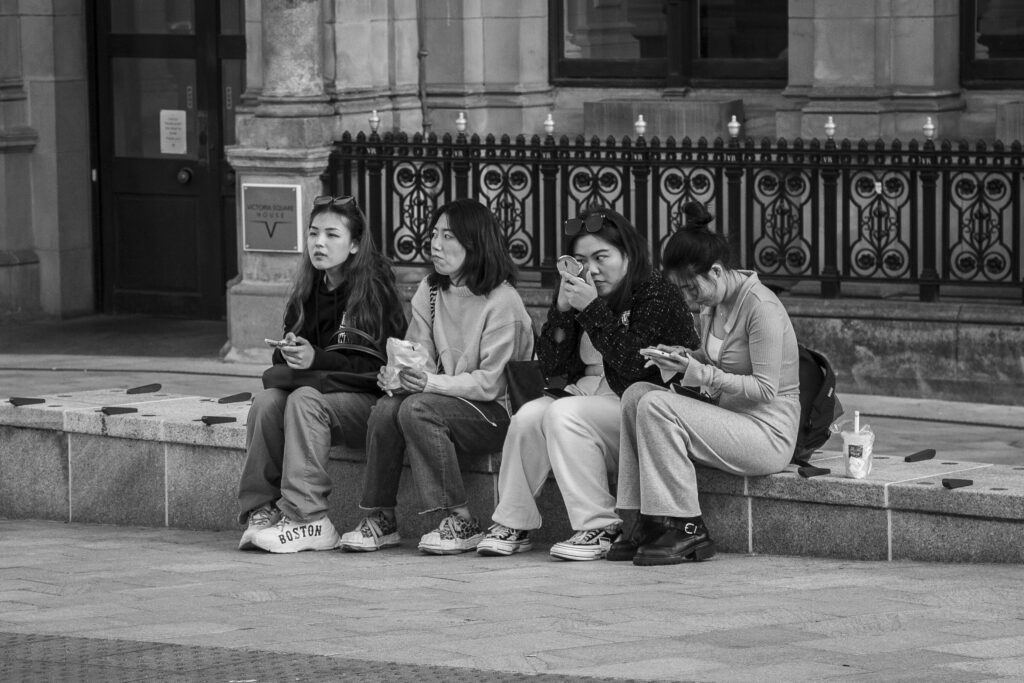
To any amateur or hobbyist photographer, a 1 series Canon camera is something awe inspiring, truly special and which mere mortals like myself can usually only dream about ever owning. When Canon release a product with a “1” on the badge, you can be sure that there is absolutely nothing better that they, and usually others, have to offer at that time.
The EOS-1D is a remarkably important and prestigious camera for Canon. In all of the Company’s history only a very few select cameras have worn the ‘1’ label, each has been at the pinnacle of the current state of technology and (of course) it is a name only given to the best Canon have.
DPReview.com – https://www.dpreview.com/reviews/canoneos1d/25
When I first got my hands on a lowly 350D in the early 2000’s I was absolutely hooked on Canon cameras. I’d read every review of new models and I knew the range better than a child of the 1990’s knew the contents of the Argos catalogue. I clearly remember reading the review for the 1D Mark II and talking about it with friends who were in to photography at the time. We all had the same opinion – owning a camera like this was so far out of our reach that it just seemed like an impossibility, these were tools in the category of ”unobtainable fantasy machines.” The price wasn’t so much steep as completely vertical.
Our young 20 something selves would talk about how mad it would be to shoot 8.5 FPS and imagine what it would be like to get the chance to use something that was just so huge and built like a tank. We’d discuss what we could do with auto focus that was practically instant whilst capable of tracking anything you pointed it at.
The probability of it ever happening, really, was akin to casually upgrading my bicycle for a Formula 1 car. Just imagine the pictures we’d take! We’d say. Then it’d be on to the lamenting about how unfair it would be that some people are literally given them for free, it’s their job to use the best… why can’t that be our job?!
Is this the ultimate digital SLR? For now I have to say yes, it offers an amazing level of build quality and environmental sealing, superb eight megapixels of resolution, low noise at almost any sensitivity, over eight frames per second (with a forty frame buffer) and near instant performance. All this for $1,000 less than the EOS-1D cost when it was introduced.
DPReview.com – https://www.dpreview.com/reviews/canoneos1dmkii/24
As an adult, the price makes more sense. If you ran your own business, you’d see the £4-5000 price tag as a necessary investment to get the best tools for the job that you do. I’d not expect a carpenter to turn up with a hand saw from Wilko and some “Middle of Lidl” chisels. Generally speaking, top of the range professional tools make life easier for skilled tradespeople. If you know what you’re doing and have years of experience behind you, then all the subtle differences between “good” and “the best” are game changing. Not only that, the guaranteed build quality alone may save an entire job that would’ve otherwise been lost with consumer grade equipment. If only I’d had this level of foresight and set up a photography business when I was young and free of commitments!
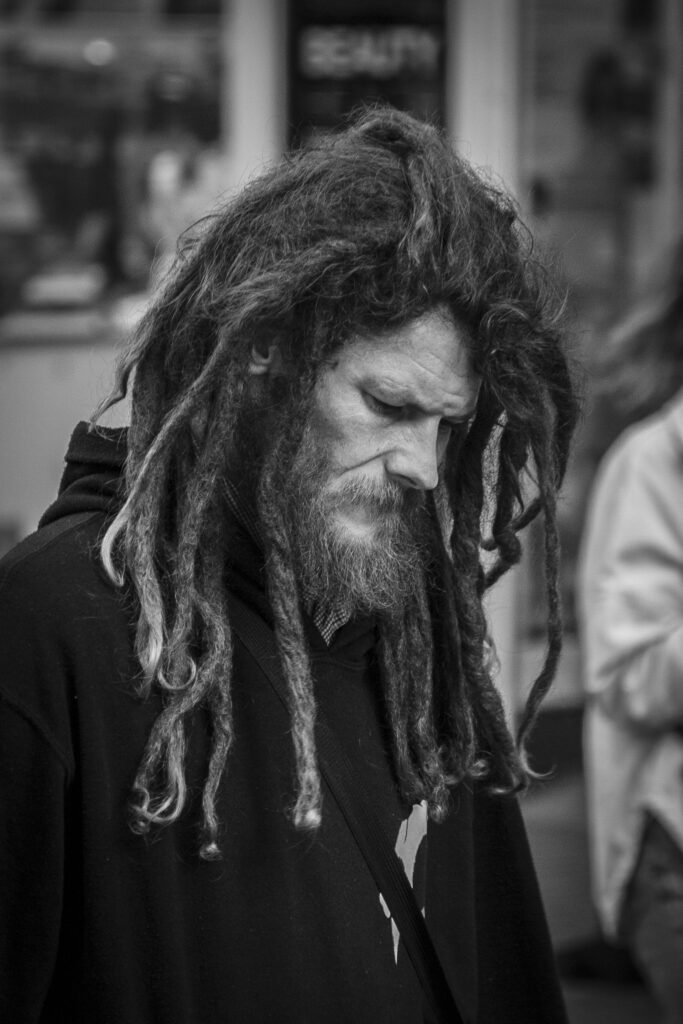
The one series is more than a price tag, however. These cameras are the product of an intensely talented and focussed team of engineers who, through years of experience and testing, have worked on every subtle detail to create what was once the ultimate imaging tool.
As we’ve discussed here before, just because something is old does not mean that it suddenly loses the quality that it once had. The old 1D Mark II can still produce the same stunning images, provide the same stunning ergonomics, features and reliability that it did when it was new.
Only now we have the advantage of obsolescence. If I wanted to buy a 20 year old Ferrari, it’d cost more than the original list price. To buy the 20 year old Ferrari of digital cameras is a matter of just over £130 and that is a proposition I just cannot ignore…
The crème de la bargain
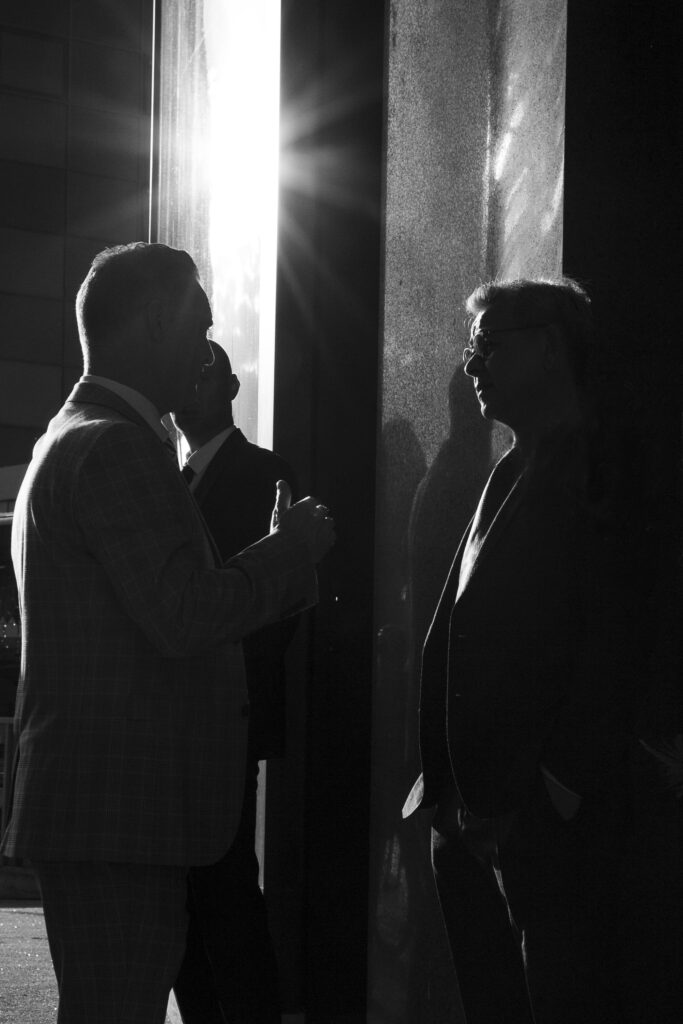
If you’re a long time reader of this site, you’ll know that one of the most dangerous activities I can engage in is a visit to MPB.com and clicking the “Sort by price – Ascending” button on the Canon DSLR page. The pricing of cameras doesn’t seem to make much sense to me, because mixed in with the really low end mass-market bodies are these absolute gems like the original 5D and, of course, the 1D.
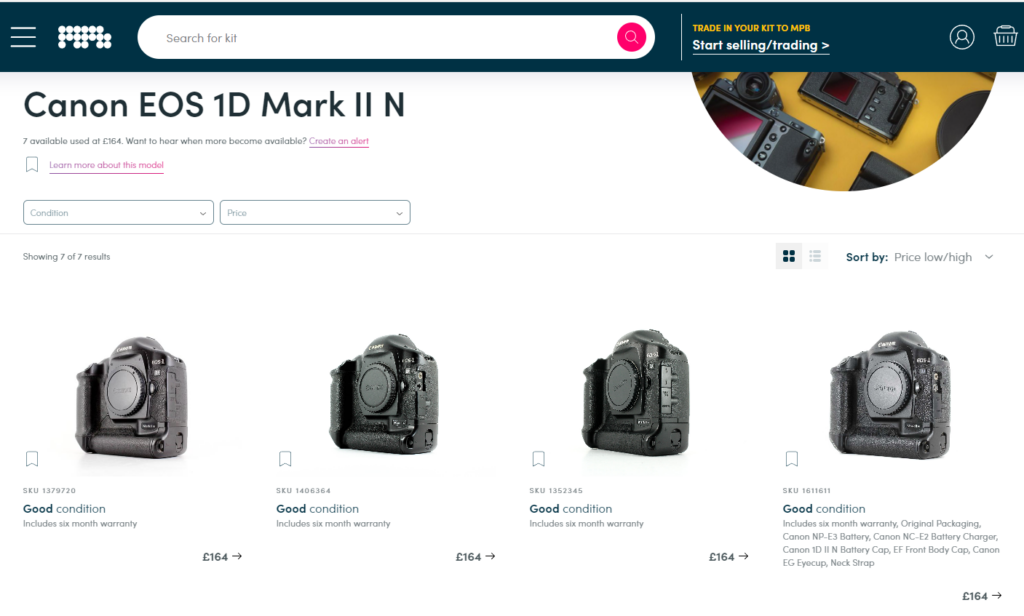
If you’re in to video, then I get it, but for anyone who actually wants to take photographs, I cannot understand the attraction of a newer body from really low down in the current, or last generation line up. Take the 4000D below, it is the exact same price as a mint condition 1D, it offers 18MP resolution (enough to print yourself a billboard advert) and video features. It really is a little marvel in its own right.

The thing is, other than resolution, it’s a plasticky cheap body built to a budget. You lose out on ergonomics, handling, build quality, longevity and robustness. There’s little or no weather sealing, slower and less capable AF, fewer metering modes. The list goes on. Whilst resolution has never stopped advancing, the trickle down of truly top end features has not happened – it can’t do at this end of the market because of the cost of implementing these features and the risk of Canon eating their own lunch by doing so. So, other than someone on a budget wanting to shoot Youtube videos, why would you compromise?
I paid £140 for my copy of the 1D Mark II n and, whilst not cheap or throw away pocket money pricing, in context it is absurd value for money, especially when I paid more for my “as new” condition 5D Mark I. As soon as I saw how cheap it was to access the 1 series range on the MPB website I knew I would inevitably end up buying one. It’s something I’ve longed for, literally for 20 years, and to finally be in the position to fulfil a dream is… well, the stuff of dreams.
I put off the purchase for a few months, convincing myself that as I had a 5D already, I couldn’t really justify buying a 1 series, I didn’t need 8fps performance and if I did splash out, I should go full frame and get a 1Ds. Well, logic and consideration go out of the window when you’ve just offloaded some old tat on Facebook Marketplace and you suddenly realise you’re holding in your hand almost exactly the amount you need for one of these fine machines…
A new arrival
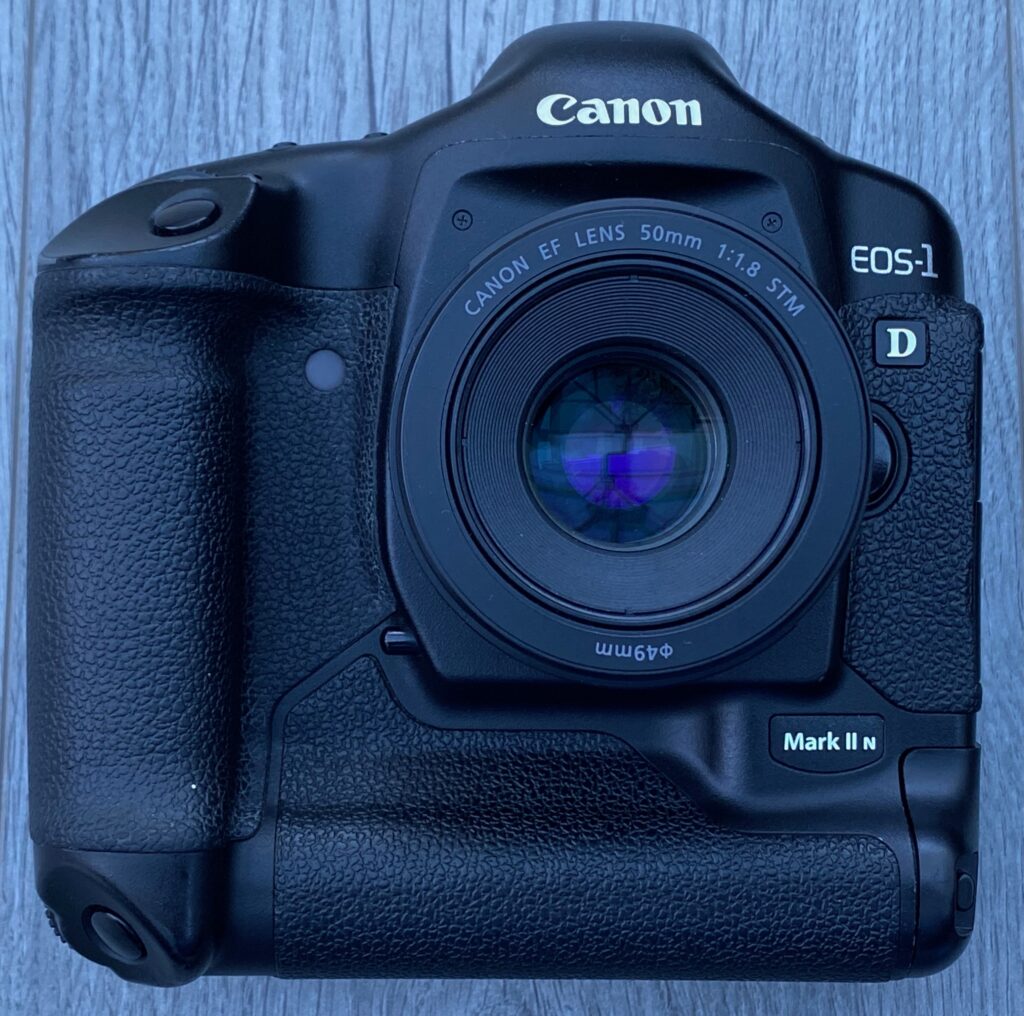
My 1D arrived a week or so ago and the DPD delivery driver really looked after it. He couldn’t be bothered to ring the doorbell, waited 3 seconds (literally 3, on the video from the doorbell he ignored) and then placed it gently (threw it) behind my car before walking off. I’d be surprised by this, if it wasn’t for the case he’d done the exact same thing a few weeks back with a present for my daughter. I used to rate DPD.
Anyway, the camera was reasonably well packaged and came in the original box. There’s a lot of extra gear that seems to come with a 1 series and most important was the manual, because for the first time ever I was clueless as to how to operate the thing.
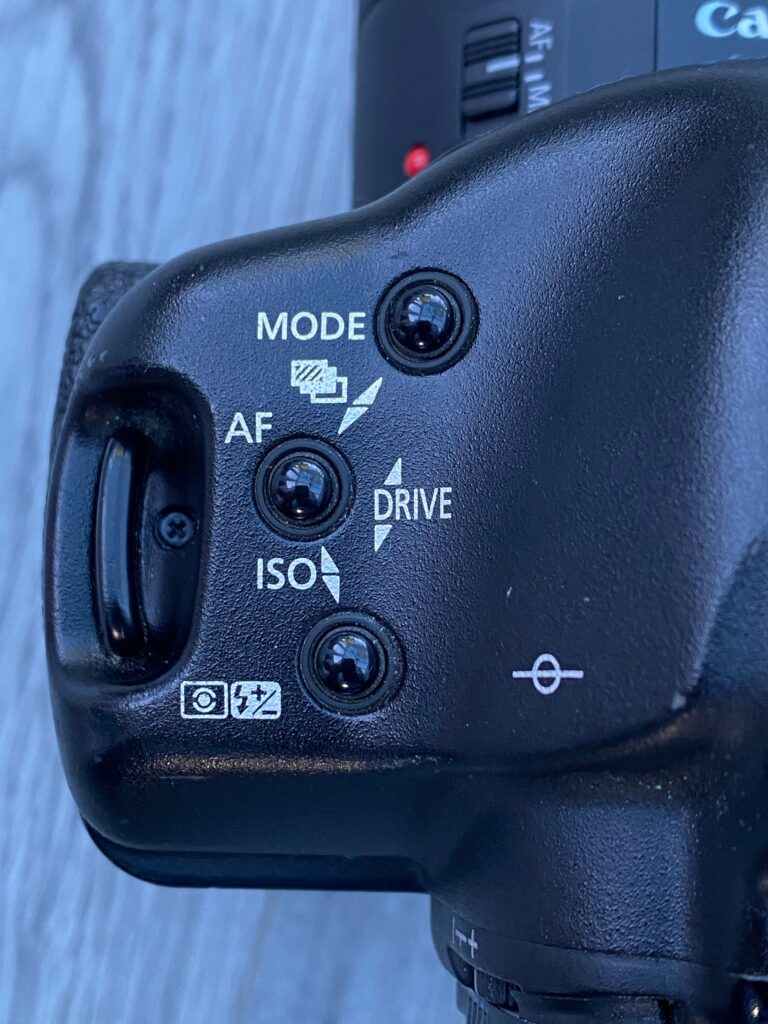
Being a professional camera, it is designed to be almost impossible to accidentally change a setting. Everything other than shutter/aperture adjustments require at least two buttons to be pressed together. This makes complete sense when you think of the absolute bedlam these cameras have been through in the hands of professionals. This is a body designed to go to anything from a cramped press pit at a sports game, to rock concerts where you can’t see a thing, to a war zone. In these situations, you are not protecting your gear with bubble wrap, things get thrown into the back of cars, bottoms of bags, dropped, you name it and they need to carry on working regardless.
As such, whilst the controls and buttons all seem familiar and are where you’d expect them to be, almost none of them work in the way you’re used to. This is odd, because you can go from the oldest Canon EOS SLR to the newest 5D and the controls are basically identical. Make the step to the 1 series and suddenly you’re learning everything all over again. Initially, it is bizarre that you have to hold a button whilst rotating a dial to change even a menu option, but you get used to it quite quickly. It can be frustrating when all you want to do is change ISO, but remembering that this could be the difference between a shot that pays the bills or a blurry miss, you can see why they did it.
One of the first things I noticed, looking in Adobe Bridge at some test shots, was that this camera belongs to one “Joe Fox” of “Joe Fox Photography.” A quick Google took me to a page that looked like it was made in the last century.

This website is extremely broken. Joe apparently runs a photography business, a stock photo company and does training on the side. If you click on the links you can get to no less than three different designs of the same site. I have no idea how you would break a website quite as badly as this, nor how you wouldn’t realise and get it fixed. Still, there you go, and Joe has clearly earned enough money over the years to be able to afford the best equipment and he’s still going today. I can only conclude his photography is far better than his website.
The problem here is that the camera owner name is set by a very specific Canon utility. No problem, you may think, just download it and switch the owner details, right? Wrong. Although the 1D has a USB port, this was only for downloading images to the computer. This is utterly bizarre when you think that a CF card reader would’ve been (and still is) far faster than any USB transfer via cable.
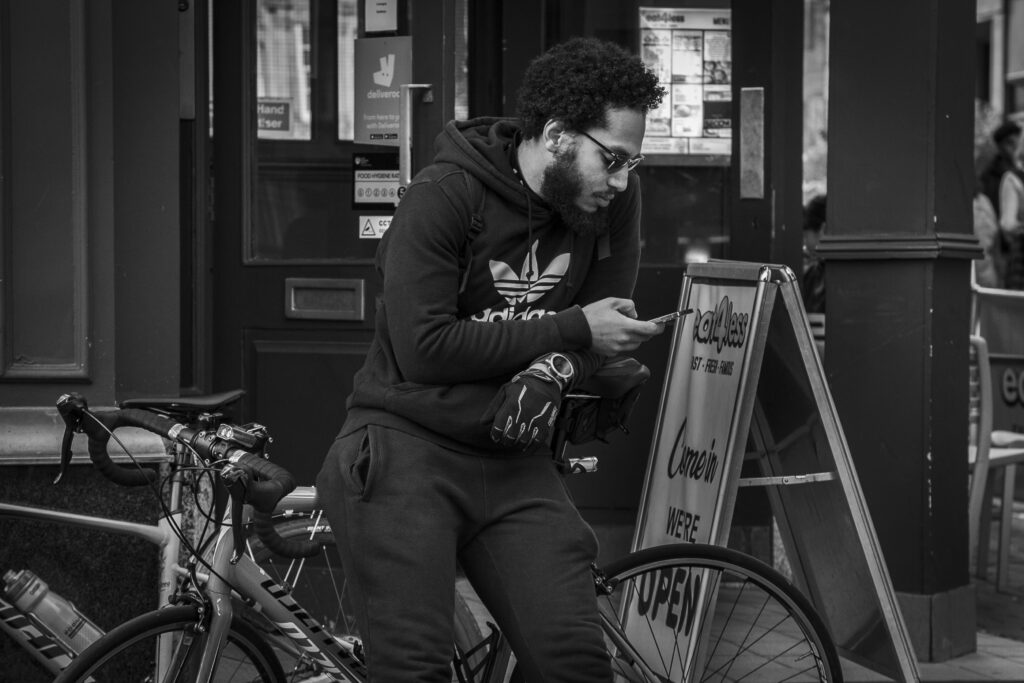
The remote control features or tethered shooting on the 1D works through a Firewire cable, so the USB port seems almost redundant. From the 1D mark III onwards, this changed, but for me I am stuck with Joe’s name embedded in my camera, and every shot I take, until I get hold of the correct cable… oh and boot up a 20 year old PC to run the program on. Amazon are on their way.
Finally, I looked up the shutter count for the camera. This is quite important as the rated life is around 200,000 frames. This sounds like a lot, but in a machine that pumps out 8 frames in a second and would’ve been used on an almost daily basis, it could very easily be reached by someone determined enough. Theoretically, if you held down the shutter and had an endless buffer, 200000 shots would take just under 7 hours to shoot.
Fortunately for me, my 1D mark II has seen 70,000 shots in its entire life. This isn’t bad really, is it? Less than half of the rated life of the shutter has been used and I’m unlikely to touch the best part of 20,000 if I go completely mad with it. We’ll call this purchase a win.
Let’s go and be pro

I need to get one thing out of the way. This camera is the heaviest body I’ve ever held by a country mile. With the 24-105 F4 L attached the camera has so much mass that I felt at risk of it creating its own gravitational pull and things beginning to orbit me. I very briefly tried just hand holding it whilst walking around and instantly regretted it. Was this an issue for real professionals back when it was new? No, of course not, this would’ve been mounted on a tri or monopod, or attached to a really decent sling like a Black Rapid or similar. A point and shoot this is not.
To avoid repeating myself, the simple way of describing the 1D experience is that everything is exactly as you would expect it to be. The viewfinder is really bright and clear, all the information you could possibly need is there, yet it never interferes with your composition. Autofocus is the best I’ve ever used, not only does it seem to have an unnatural ability to just grab something relevant and lock on to it, but it will also tell you equally quickly when it cannot gain focus. Think about it – if you have one limited opportunity to get a shot, you need to know quickly if something isn’t going to work. Better still is the 1D will give you options and fallbacks should it fail to focus, all configurable in the endless list of custom functions.
In terms of handling it is the photographic equivalent of wearing a really well fitting pair of gloves. You never for a second ever consider that it could fall or slip from your grip. It’s odd, but it is like having it glued to your hands. Controls are exactly where you want them to be and the most important control of all, the shutter, is just sublime.
Doesn’t that sound crazy? How can a shutter button feel amazing? Trust me. I cannot explain it, other than to say that I’ve used a lot of cameras and nothing has ever felt like the 1D shutter does. It is super, super sensitive. The lightest touch will immediately fire off a shot. The immediacy of shutter press to the image being taken is quite startling at first, it’s an absolute animal. However, here’s the really odd bit. Perfectly sensitive though the shutter is and although it only needs the lightest of touches to activate, it never goes off unexpectedly or from just leaning your finger on the button. Whoever engineered this button is, without shadow of a doubt, a genius.
Finally, the shutter sound. Imagine the sound of a camera firing in a Hollywood film, that classic *clack, clack, clack!* of paparazzi cameras. That is exactly the sound the 1D makes and it is so satisfying. Of course a sound doesn’t make a difference to the images you capture, but my god it makes me smile.
Once I’d got my head around focus point selection, it just felt like the most natural thing in the world to use. I stopped thinking and just started smashing out shots of everything that took my eye on a quick walk about.
Does it really make “the difference”
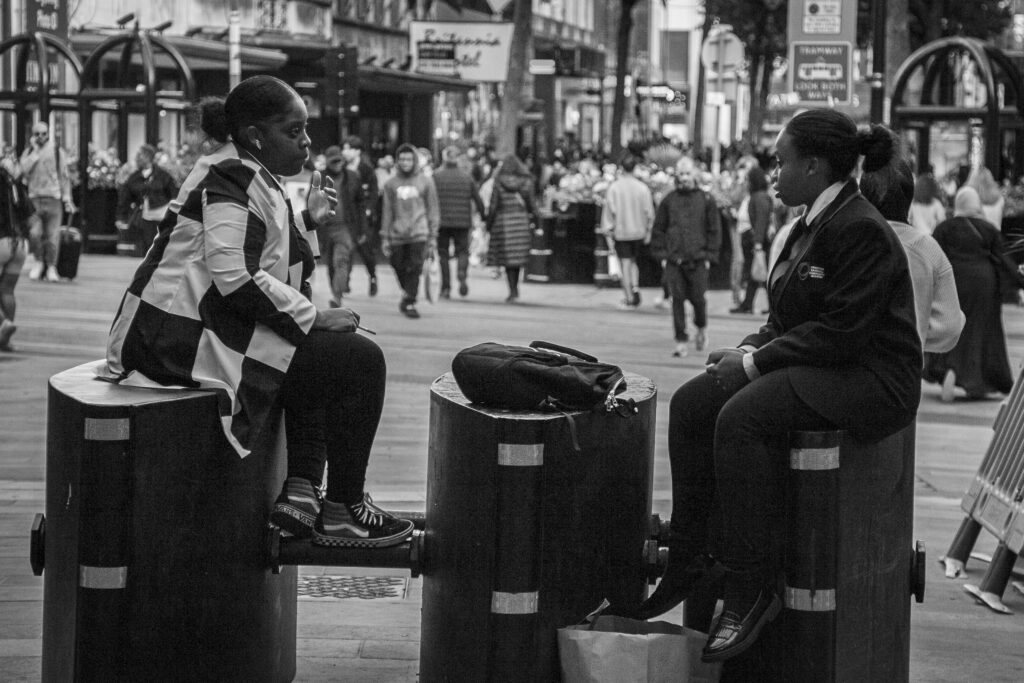
This is not a subtle piece of equipment, there is nothing stealthy when you walk down the street pointing it at people. They know full well you are doing a drive by shooting of them. Isn’t this the case for all cameras? Surely everyone notices when you point a camera at them? Well, actually, no. There are definitely certain bodies and lens combinations that just blend into the background, or make your actions far more inconspicuous. Some cameras are so slight that it is actually difficult to tell whether you are the subject or something merely around you. All of this helps when trying to capture a moment rather than a reaction to a machine the size of a loaf of bread attached to your face.
The 1D Mark II wasn’t made to be a street photography camera, unless you were on the streets of Iraq or Afghanistan, perhaps. However, it is easily the best camera I’ve ever used on the street. This camera just eats compositions for breakfast, if you miss a shot you are left in no doubt whatsoever that you are the problem and not the camera. The only shots I lost in my quick test were due to the shutter speed being too slow and this was definitely my fault because I refused to raise the ISO above 800. I don’t know why and I later changed my mind about that particular peculiarity.
On the subject of ISO, I shot everything at between 800 and 1600 ISO. I absolutely understand that you can buy a camera today that will do ISO 25,600 and higher, things have moved on – I get it. The ISO performance of the 1D is nothing short of remarkable. This was only a second, perhaps arguably third generation camera and the images are just beautiful up to ISO 800. At 1600, you can see noise if you zoom to 100% but there is none of the crazy colour noise I got used to with my old 350D, it has a much more “film grain” aesthetic and I haven’t got a single shot that has been spoiled by noise.
Conclusions and Learning
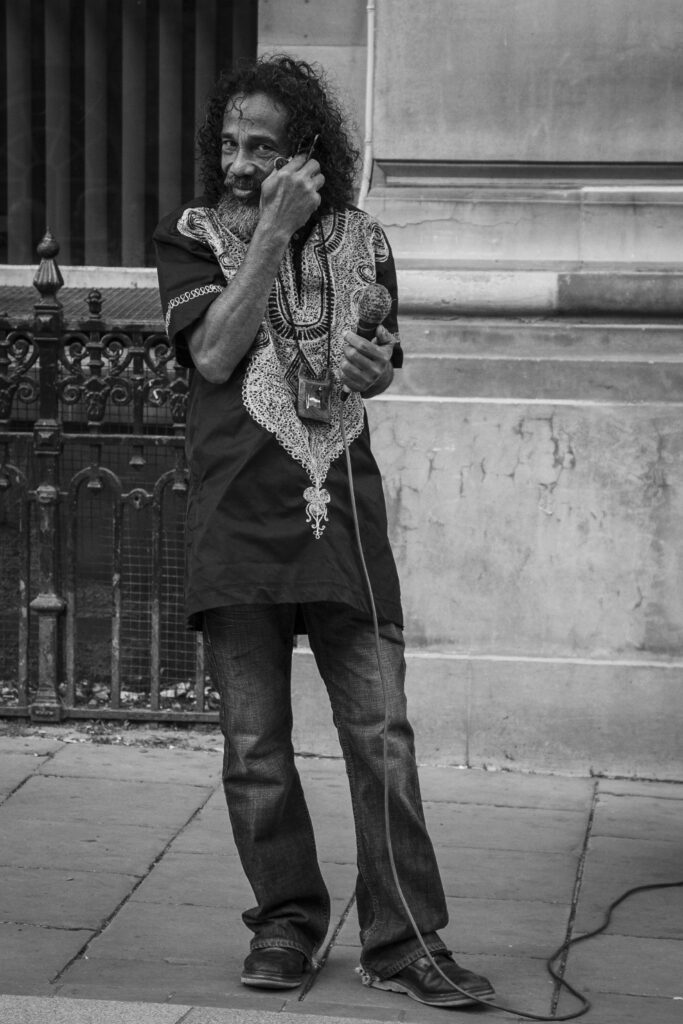
The fact of the matter is my journey into 1 series territory has only just begun. I have merely scratched the surface of what this camera is capable of and have only started to learn the very basics of how to control, customise and set up this titanic of an imaging machine. Yet so capable is the 1D that in the space of two hours I have already managed to capture some of my all time favourite images.
I’ve discussed where the 1D series truly shines and what it was originally designed for, but really this is the one camera to rule them all. It can adapt to any scenario, any shooting style, any preference or set up you need and it will just smash out frame after perfect frame.
My “one true love” is film photography, it always will be. I love learning to get it right first time in camera, when I develop and scan my films I very rarely, if ever, do any editing of the final images other than a bit of contrast and sharpness here and there. I like things to be “as is” and I’ve never been good at or interested in heavily modifying images using Photoshop.
The 1D is the closest I’ve ever felt to film when using a digital camera. As I loaded the images into Camera Raw I found myself just looking at them and shrugging my shoulders before hitting “export to JPG.” I have never had this experience with a DSLR before, normally I’m sat fiddling with various sliders before I’m happy with the image, occasionally opening up in Photoshop for further correction.
Maybe I got lucky, I’m open to that idea, but my initial impression is that the 1D just produces images straight out of the camera that are, to my eyes, ready to go. Is this really that surprising? If this camera were in the hands of a photographer at the 100m finals, or a football game, they wouldn’t be able to sit there casually polishing their images in Photoshop. Those pictures would’ve gone straight into a laptop and immediately sent off to an editor – they needed to be perfect first time.
Using this camera has made me completely reconsider my options when it comes to shooting digitally. I’ve amassed quite a collection of Canon bodies acquired on a shoestring budget whilst testing them out for this site. By and large, each one has endeared itself to me for one reason or another, perhaps the history or significance of the model and what it meant at the time of release, or maybe a unique feature like full frame on the 5D. This has made me reluctant to move them on, convinced I’ll probably pick them up again at some point. Now, I’m not so sure. The fact is the combination of a 5D and 1D is truly formidable and frankly, why would I use anything else?
A 5D body gives you portability, superb image quality and full frame when you need it. The 1D just makes you feel like Lord of the Photos. It may well be time to return some cameras to the great ebay recycling centre. I am going to shoot the 1D again and again and again. I can promise you every time I use it, every time I hear that wonderful shutter sound I’ll have a big, stupid grin on my face.
Now, does anyone want a 300, 350, 10, 20 and 30D…?
Share this post:

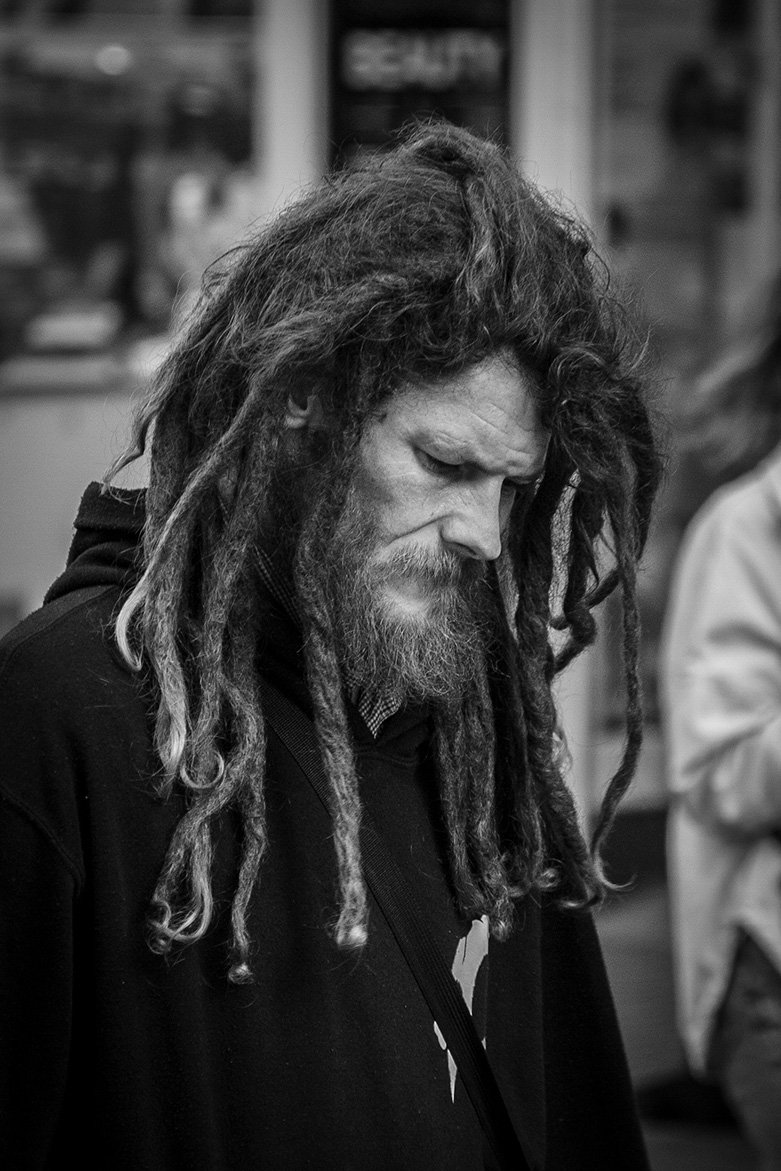
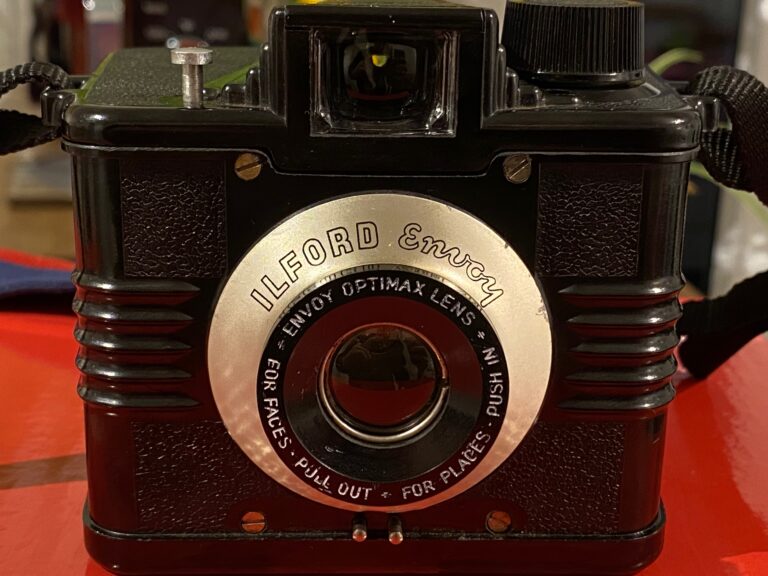

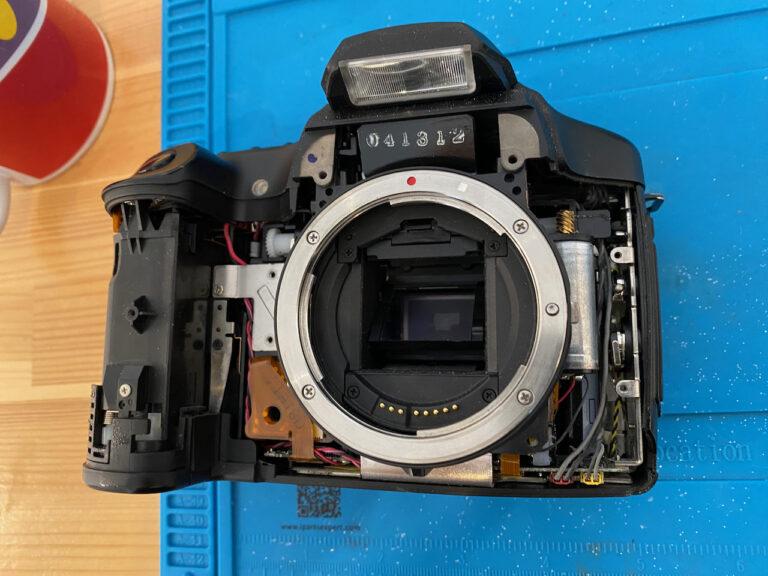
These are awesome cameras. I have a 1D and 1D mark ii. Wanted to mention to that the 1D has a CCD. Has a real neat 3D film look.
Hi, great article. I went got myself a 2000D (to replace my very old 35mm slr) and was over the moon with it. Picture quality, dynamic range and just generally usability of it, I loved it. Then, like you I was looking through MPB and saw the 1d series and started thinking….
I eventually purchased a very good condition 1DS mk 2 with original charger and two batteries from CEX for £200. I won’t bore you with all the details but after spending a couple of weeks getting used to the controls and seemingly endless or settings (this involved reading an owner’s manual for I think the first time in my 54 years) I took some pictures and after viewing them side by side on my Mac, sold the 2000d and upgraded to a 750d. As you have said, the 1ds is on another level in image quality. I only use ef glass (can’t justify the cost of L glass for what I use it for) but this gives my the ability to make direct comparisons between different bodies using the same glass and quiet honestly, the 1ds is awesome even in my hands. Only slight issue is have you tried walking around with the 1ds and a 150-500 lense taking wildlife pics? All I will say is it’s cheaper than a gym membership! (Hence the 750d)
The 1 series is just so much fun, I still enjoy firing off 10fps bursts. You’re right though, the weight is something else – I notice this far more with my film 1n-hs, however, that just seems too heavy the more I use it. Sadly, the standard grip is £80 at a minimum and it just isn’t worth spending the money on. That camera is so impressive from a film perspective, it winds film so fast I’m amazed it doesn’t destroy it in the process.